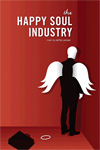
Left side of my reef, featuring the big Sailfin tang I call “Moose”
I maintain a 180-gallon reef aquarium in my home. Try to anyway. The coral reef is the most complex, delicate and beautiful ecosystem in the world. Lighting. Filtration. Water parameters. Flow. Everything has to be calibrated and monitored in order to even passably mimic a real coral reef. One or two miscalculations and your reef crashes. Suffice it to say, this is not your father’s guppy tank.
Still, or maybe because of the challenges, I am an addicted reefer. I can easily spend two hours in twenty-four with my hands in the tank and even more online doing research. Nothing tweaks my nerd DNA more than scouring websites, gaping at corals, bidding on equipment, or contributing to a forum. Reef porn is real.
An ad agency has a lot in common with my reef. Though it can be more polluted (joke), the hallways and cubes of an agency ecosystem are populated by equally diverse and complicated organisms. Some species, like the showy creative, can in fact be very sensitive. While others, the account director for example, can be very aggressive. Given the two must live together the experience can be challenging. Certain aggressive species torment smaller creatures, nipping at their work, crushing them. Biting criticism takes its toll. The wounded creative hides in his cave, camouflaged by earphones, avoiding the persistent predator. If the biggest fish in the tank is a bully, everyone suffers. When the tank becomes mired in territorial disputes, the whole thing crashes. Sound familiar?
It doesn’t have to.
Last night I observed my cleaner shrimp nibbling parasites off a troubled yellow tang and I realized that there is wonder here. When all these myriad creatures work together, giving and taking in harmony, the results are truly breathtaking. The solitary superstar flashes brilliance. A school of darting Anthias shows the awesome power of collaboration. If the tank masters accept the occasional skirmish, providing nourishment to all, then the ecosystem will flourish.
I am now available for writing projects and/or a creative leadership role. Please contact me directly @ Steffan1@rcn.com or via Linkedin. I look forward to engaging with your ecosystem!








 The Happy Soul Industry
The Happy Soul Industry The Last Generation
The Last Generation